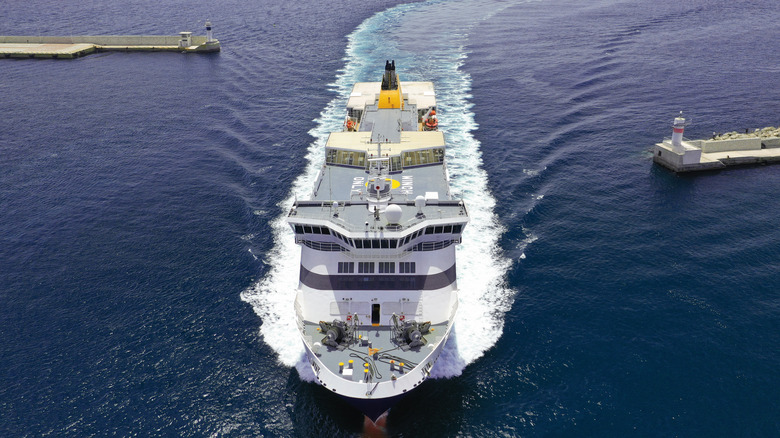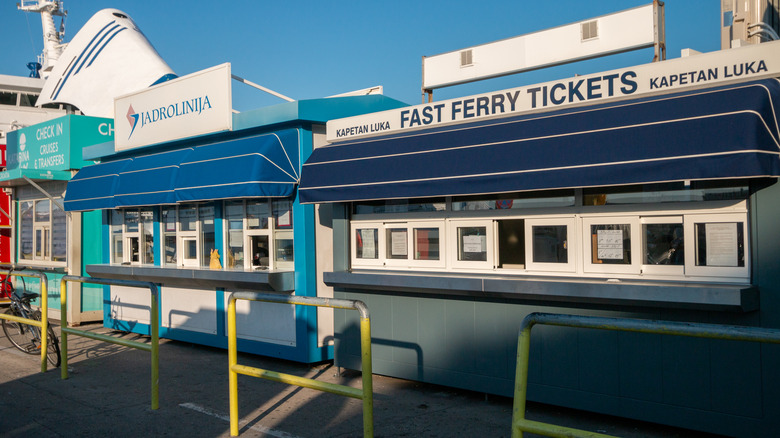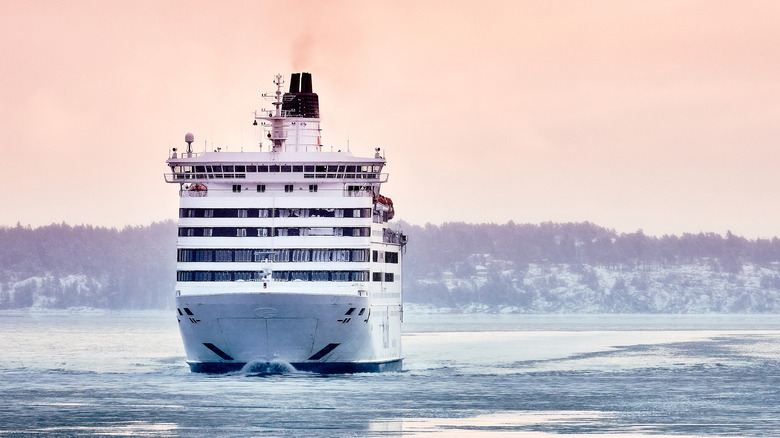Rick Steves Shares What You Need To Know Before Taking A Trip On A European Ferry
For many people, the most convenient — and romantic — way to travel around Europe is by train. However, taking a ferry on the continent is often not only necessary but can be a glorious way to travel, too. Ferry travel in Europe isn't quite as simple as just turning up and walking or driving on, though. And that's where European travel expert Rick Steves comes in. Steves has traveled the continent extensively and has shared some great tips on his website about what you need to know when taking a ferry trip in Europe.
One of the big things that Steves shares is about schedules. Unfortunately, European ferry schedules aren't as easy to find as train timetables. Steves advises checking several different sources to find sailing times. He recommends aferry.com for sailings in many places in Europe. Directferries.com is another good source where you can check schedules and buy tickets for many different countries. Country-specific websites include ferries.gr for Greece and Jadrolinija.hr for Croatia.
Steves writes that many ferries are seasonal, running only in the warmer months, and that schedules are often posted just before the season — making it difficult to plan your trip months in advance. He recommends double-checking sailing times a day or two ahead of your trip, as schedules can also change during the season.
Buying tickets
When it comes to tickets, Rick Steves usually favors buying in advance. On some routes, prices are lower if you buy early, especially in the U.K. In many places, ferries can be crowded during the peak season, so you should secure your spot at least a few days before sailing. You can try to book online from the U.S. using some of the sites above or wait until you arrive in Europe and go to the port or ask your hotel for help.
Costs can vary widely depending on when you book and whether you choose a fast or slow ferry. Tickets between the popular Greek islands of Santorini and Mykonos cost from €26 to €156 ($28-$170), for example. Ferries from Dover in the U.K. to Calais in France cost between £60 and £237 ($75-$297). By booking in advance, ferries can be a cheap way to get around Europe.
If you have a Eurail Pass, Steves says that your pass might include the ferry fare or may entitle you to a discount with certain companies. Popular routes include Italy to Greece, Italy to Croatia and Denmark to Norway. Check the Eurail site before you part with your money.
The boats and where to go
The type of boat you use might change depending on the season, Steves writes. Catamarans, which are smaller and faster than ferries, tend to only run in the summer months, as they are more reliant on good weather. When traveling in Europe outside of the peak season, you may have to take a slower, larger (but usually more stable) ferry. Steves likes catamarans for their speed, but he mentions that you often have to spend the journey inside on a catamaran. In contrast, on a ferry, you can usually get out on deck and enjoy the scenery.
If you're doing a trip with a car, you're going to need to take a car ferry. Greece has lots of car ferries, with many travelers flying into Athens and setting out from there. Though having a car can be very convenient, you'll need to plan further in advance. Ferry Hopper recommends booking car ferries three months in advance.


